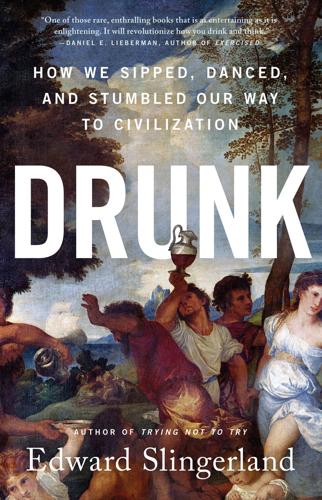
Drunk: How We Sipped, Danced, and Stumbled Our Way to Civilization
by
Edward Slingerland
Published 31 May 2021
Hogan quotes an observation by Tim Ferriss, an angel investor and author, that “the billionaires I know, almost without exception, use hallucinogens on a regular basis.”27 These anecdotal accounts of microdosing enhancing creativity are supported by preliminary survey evidence. One recent study of online respondents28 contrasted the performance of self-reported microdosers and individuals who had never microdosed on the Unusual Uses Task (UUT). It found that microdosers generated responses that were rated as significantly more uncommon, unexpected, and clever than those of their non-microdosing peers. Another study of Dutch microdosers in a naturalistic setting29 found that administering a microdose of psychedelic mushrooms improved performance on two measures of creativity.
…
LSD was instrumental in the creative design process that gave rise to circuit chips, and Apple founder Steve Jobs claimed that his experiments with LSD ranked as some of his most important life experiences.23 The synergy between San Francisco drug-based hippy culture and Silicon Valley innovation has been replayed in other places around the globe, from Berlin to Beijing, where intoxicant-heavy underground or bohemian cultures have rubbed shoulders with new industries dependent on creative insight rather than manufacturing muscle.24 A modern twist in hallucinogen use—a trend pioneered, as one might expect, in Silicon Valley—is making psychedelics easier to integrate into everyday life through the practice of “microdosing.”25 Microdosing involves taking frequent but small amounts of purified LSD or psilocybin, on the order of one-tenth of the normal dose, to induce mild, but sustainable, highs. The journalist Emma Hogan has documented widespread microdosing among knowledge workers in the San Francisco Bay Area.26 One interviewee, “Nathan,” credits microdosed LSD with increasing his productivity, giving him a creative edge, and magnifying his impact at investor-pitch meetings. “I view it as my little treat.
…
“Effects of external evaluation on artistic creativity.” Journal of Personality and Social Psychology, 37(2), 221–233. Anderson, Thomas, Rotem Petranker, Daniel Rosenbaum, Cory R. Weissman, Le-Anh Dinh-Williams, Katrina Hui,…Norman A. S. Farb. (2019). “Microdosing psychedelics: Personality, mental health, and creativity differences in microdosers.” Psychopharmacology, 236(2), 731–740. Andrews, Michael. (2017). “Bar talk: Informal social interactions, alcohol prohibition, and invention.” (Unpublished manuscript.) Archer, Ruth, Cleo Alper, Laura Mack, Melanie Weedon, Manmohan Sharma, Andreas Sutter, and David Hosken.

Tools of Titans: The Tactics, Routines, and Habits of Billionaires, Icons, and World-Class Performers
by
Timothy Ferriss
Published 6 Dec 2016
Albert Hofmann, the inventor of LSD, considered microdosing the most neglected area of research. Hofmann microdosed LSD often for the last few decades of his life. He remained sharp until he died at 101. He would take it when he was walking among trees. In Jim’s opinion, microdosing psychedelics does a far better job than a whole class of drugs we now call “cognitive enhancers,” most of which are simply derivatives of speed. Oddly, there are consistent reports of microdosing having a lag effect. I’ve experienced this myself, and it’s the reason for Slim Berriss’s Monday/Friday spacing of ibogaine. Many microdosers, including one executive who runs a large corporation with manufacturing in five countries, have said, “The second day is better.”
…
Self-explanatory. 10 to 15 mcg is a “microdose.” Described by Jim: “Everything is just a little better. You know at the end of a day when you say, ‘Wow, that was a really good day’? That’s what most people report on microdosing. They’re a little bit nicer.” He elaborates: “What I’m finding is that microdoses of LSD or mushrooms may be very helpful for depression because they make you feel better enough that you do something about what’s wrong with your life. We’ve made [depression] an illness. It may be the body’s way of saying, ‘You better deal with something, because it’s making you really sad.’ “[A microdose of psychedelics is] actually a low enough dose that it could be called ‘sub-perceptual,’ which means you don’t necessarily see any differences in the outside world.
…
My Good Friend I have a good friend, let’s call him Slim Berriss, who’s devised a schedule for himself that combines practical microdosing and pre-planned 1- to 2-day treks into deeper territory. For him, this blend provides a structured approach for increasing everyday well-being, developing empathy, and intensively exploring the “other.” Here is what it looks like: Microdosing of ibogaine hydrochloride twice weekly, on Mondays and Fridays. The dosage is 4 mg, or roughly 1/200 or less of the full ceremonial dosage at Slim’s bodyweight of 80 kg. He dislikes LSD and finds psilocybin in mushrooms hard to dose accurately. Woe unto he who “microdoses” and gets hit like a freight train while checking in luggage at an airport (poor Slim).
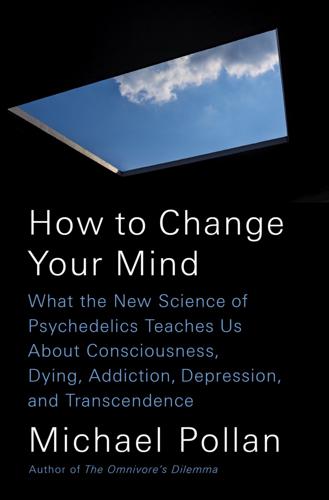
How to Change Your Mind: What the New Science of Psychedelics Teaches Us About Consciousness, Dying, Addiction, Depression, and Transcendence
by
Michael Pollan
Published 30 Apr 2018
* * * • • • ONE LAST NODE worth visiting in Al Hubbard’s far-flung psychedelic network is Silicon Valley, where the potential for LSD to foster “creative imagination” and thereby change the culture received its most thorough test to date. Indeed, the seeds that Hubbard planted in Silicon Valley continue to yield interesting fruit, in the form of the valley’s ongoing interest in psychedelics as a tool for creativity and innovation. (As I write, the practice of microdosing—taking a tiny, “subperceptual” regular dose of LSD as a kind of mental tonic—is all the rage in the tech community.) Steve Jobs often told people that his experiments with LSD had been one of his two or three most important life experiences. He liked to taunt Bill Gates by suggesting, “He’d be a broader guy if he had dropped acid once or gone off to an ashram when he was younger.”
…
Around the same time, Willis Harman shifted the focus of his teaching at Stanford, offering a new class on “the human potential” that ended with a unit on psychedelics. The engineers were getting religion. (And have it still: I know of one Bay Area tech company today that uses psychedelics in its management training. A handful of others have instituted “microdosing Fridays.”) In 1961, Stolaroff left Ampex to dedicate himself full-time to psychedelic research. With Willis Harman, he established the orotundly titled International Foundation for Advanced Study (IFAS) to explore the potential of LSD to enhance human personality and creativity. Stolaroff hired a psychiatrist named Charles Savage as medical director and, as staff psychologist, a first-year graduate student by the name of James Fadiman.
…
In recent years, her focus has shifted from trepanation to the potential of psychedelics to improve brain function. In her own life, she has used LSD as a kind of “brain tonic,” favoring a daily dose that hits “that sweet spot where creativity and enthusiasm is increased, but control is maintained.” (She told me that there was a time when she put that tonic dose at 150 micrograms—far above a microdose and enough to send most people, myself included, on a full-fledged trip. But because frequent use of LSD can lead to tolerance, it’s entirely possible that for some people 150 micrograms merely “adds a certain sparkle to consciousness.”) I found Feilding to be disarmingly frank about the baggage she brings to the new conversation about psychedelic science: “I’m a druggie.
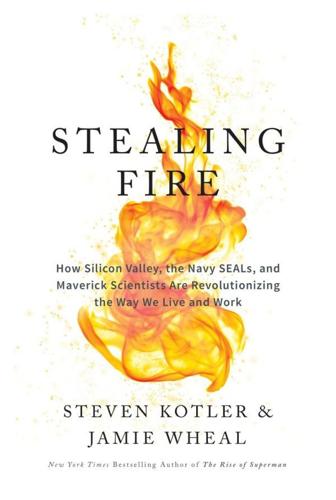
Stealing Fire: How Silicon Valley, the Navy SEALs, and Maverick Scientists Are Revolutionizing the Way We Live and Work
by
Steven Kotler
and
Jamie Wheal
Published 21 Feb 2017
On too many occasions to count, people would pull us aside to tell us about their clandestine experiments with “ecstatic technologies.”12 We met military officers going on monthlong meditation retreats, Wall Street traders zapping their brains with electrodes, trial lawyers stacking off-prescription pharmaceuticals, famous tech founders visiting transformational festivals, and teams of engineers microdosing with psychedelics. In other words, everywhere we went, someone was trying to steal the kykeon. We wanted to know precisely where this trend was originating and exactly how these leaders were altering their mental states to enhance performance. So we lit out on the trail of these modern-day Prometheans.
…
While everyone experienced a boost in creativity—some as much as 200 percent—what got the most attention were the real-world breakthroughs that emerged: “Design of a linear electron accelerator beam-steering device, a mathematical theorem regarding NOR-gate circuits, a new design for a vibratory microtome, a space probe designed to measure solar properties, and a new conceptual model of a photon.” None of these practical, technical achievements are the kind of result that most people associate with the navel-gazing world of psychedelics. But similar outcomes are happening in Fadiman’s current survey of microdosing among professionals. With more than four hundred responses from people in dozens of fields, the majority, as Fadiman recently explained, report “enhanced pattern recognition [and] can see more of the pieces at once of a problem they are trying to solve.” With these developments, psychedelics have begun moving from recreational diversion to performance-enhancing supplement.
…
Ray Kurzweil, the director of engineering at Google, once pointed out that it’s hard for nonscientists to track progress in artificial intelligence because, when it shows up in the real world, “it looks like nothing fancier than a talking ATM.” It’s true for ecstasis as well. Soccer moms with Kundalini yoga practices; business men microdosing psychedelics; tech nerds tracking biometrics, The Simpsons going to Burning Man—these developments might seem pedestrian. But they are the “talking ATM’s” of altered states. They are proof that the chasm has been crossed, that the once cutting-edge is now integrated into the everyday. Nothing New Under the Sun Under the hot August sun, in the western wilds of America, tens of thousands of misfits gather to worship and celebrate.
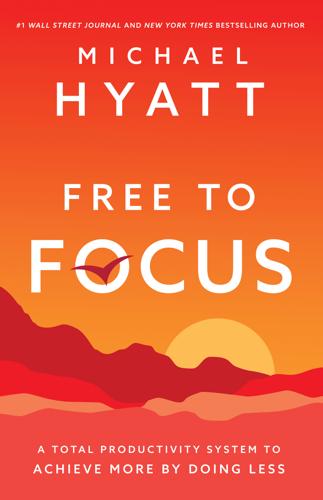
Free to Focus: A Total Productivity System to Achieve More by Doing Less
by
Michael Hyatt
Published 8 Apr 2019
Drugs,” New York Times, April 18, 2015, https://www.nytimes.com/2015/04/19/us/workers-seeking-productivity-in-a-pill-are-abusing-adhd-drugs.html. Carl Cederström, “Like It or Not, ‘Smart Drugs’ Are Coming to the Office,” Harvard Business Review, May 19, 2016, https://hbr.org/2016/05/like-it-or-not-smart-drugs-are-coming-to-the-office. Andrew Leonard, “How LSD Microdosing Became the Hot New Business Trip,” Rolling Stone, November 20, 2015, https://www.rollingstone.com/culture/features/how-lsd-microdosing-became-the-hot-new-business-trip-20151120. Lila MacLellan, “The Science behind the 15 Most Common Smart Drugs,” Quartz, September 20, 2017, https://qz.com/1064224/the-science-behind-the-15-most-common-smart-drugs/. 17. Burkeman, “Attentional Commons.”
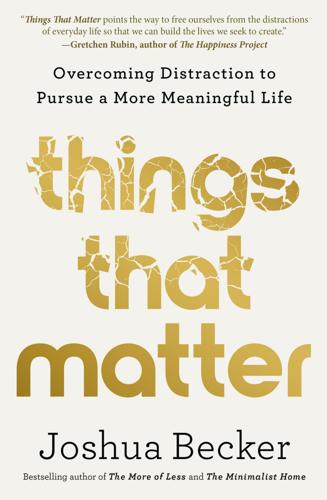
Things That Matter: Overcoming Distraction to Pursue a More Meaningful Life
by
Joshua Becker
Published 19 Apr 2022
BACK TO NOTE REFERENCE 2 Frank Furedi, “The Ages of Distraction,” Aeon, April 1, 2016, https://aeon.co/essays/busy-and-distracted-everybody-has-been-since-at-least-1710. BACK TO NOTE REFERENCE 3 Olivia Solon, “Under Pressure, Silicon Valley Workers Turn to LSD Microdosing,” Wired, August 24, 2016, www.wired.co.uk/article/lsd-microdosing-drugs-silicon-valley. BACK TO NOTE REFERENCE 4 Blaise Pascal, Pensées, trans. A. J. Krailsheimer (New York: Penguin, 1995), 120. BACK TO NOTE REFERENCE 5 The original source of the quote is unknown, although the earliest known use appears to be Ernest T.
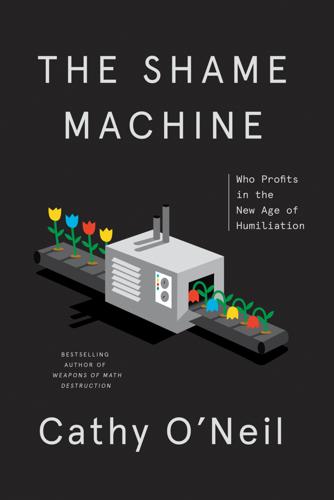
The Shame Machine: Who Profits in the New Age of Humiliation
by
Cathy O'Neil
Published 15 Mar 2022
I was speechless, but I knew what this was from experience, and from an early age: shame shock. Much of the suffering from being fat occurs on a gentler and more subtle scale. It’s the looks people give you in hallways and on airplanes, the waiter’s uneasy pause before asking if you want to see the dessert menu. Those microdoses of shame keep low-level misery and self-hatred on a steady course. Shame shock, though, is an explosion. It often occurs when someone confronts you, head-on, about your deepest shame. When you’re exposed. At that moment in the bodega, all of the shame’s poison coursed through my body, leaving me frozen, disoriented, in pain.
…
And this gives birth to splinter groups and cults that reject mainstream views, choosing instead to piece together their own narratives and often conjuring up their own facts. Despite their optimizing algorithms, however, the platforms need help to manufacture shame. That’s where we come in. Hundreds of millions of us summon the requisite outrage and censure, often convincing ourselves that these microdoses of shame nudge the world toward justice and equality. After all, that’s what shame is for, isn’t it? The idea has always been to sting outliers, shepherding them back to shared values and acceptable behavior. A white woman calling a cop to settle a dispute with a Black neighbor is not OK, and she should be punished.
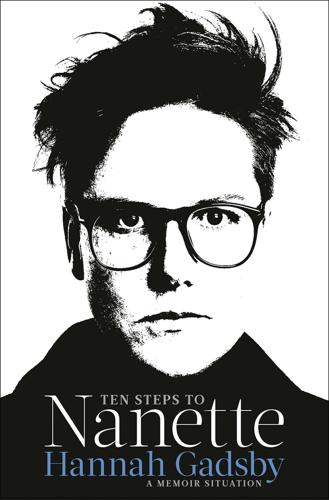
Ten Steps to Nanette: A Memoir Situation
by
Hannah Gadsby
Published 15 Mar 2022
I had been educating myself on all things trauma for a few years by then, and had become quite intrigued by the research being done into the microdosing of various mind-altering substances. To be clear, I am under no illusions that I am an expert. I know exactly what I was: I was desperate. I had been swamped with the effects of trauma for as long as I could remember, and it was clear that the cutting edge of medical science was not going to cut through my trauma in my lifetime, because the cutting edge never seems terribly concerned with the biological specifics of autistic women, or any women for that matter. What did I have to lose? I had intended to try and see if microdosing could help me develop a buffer between me and the uncontrollable panic that thinking directly about my trauma inevitably invited.
…
And this is what I did, in the order I did it: First, I went through all of my cards and picked out ten that I felt really good about. Then I cleared the next four days of absolutely everything. Stocked my kitchen up with nourishing food, locked the front door and turned my phone off, and spent the next few days repeating each of those ten phrases over and over and over again under the influence of my best guess at microdoses of MDMA. I feel obliged to tell you not to try this at home. But that feels cheap after I just told you that I did exactly that. But I would also tell you to never write a show out of your own trauma and then perform it two hundred times all over the world. That is more likely to shorten your life than experimenting with a bit of molly.
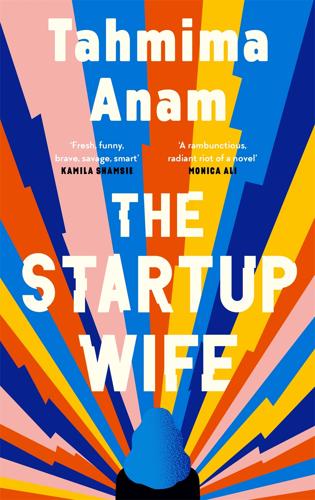
The Startup Wife
by
Tahmima Anam
Published 2 Jun 2021
Like very expensive lipstick. I pick one up. It is satisfyingly heavy. “This is vaping, right?” “No,” she says. She takes it from me and presses on the end, and when I inhale, the scent of rosemary fills my nostrils. It’s like my mouth is getting an expensive spa treatment. “Vitamin smoke,” she says. “And it comes with a microdose of pure oxygen—great for asthmatics. There are going to be way more asthmatics in the afterworld.” Destiny nods. “True.” “It’s got all the good stuff—vitamins C and D, a bit of collagen, some vaporized A, antioxidants—you can customize it. It’s called Breathe Life.” “Breathe Life?” She does a toothpaste-commercial smile and says, “Do something great with your mouth!”
…
“So do you guys hand out condoms at the door?” I ask brightly, as if I’ve ever seen thirty people naked at the same time before. “Oh, there’s none of that,” Craig says. “The cuddle puddle is a strictly non-penetrative ritual.” He looks to Cyrus for approval. Cyrus, who has finished his drink, appears not to have heard him. “Want to microdose?” Craig asks, removing a small vial from his pocket. I shake my head, but Cyrus doesn’t, so Craig passes him the vial and Cyrus casually tips the contents into his mouth. Cyrus and I have never done drugs and never really talked about doing drugs, and I wonder if there was a time before he met me when things like Molly were regularly on the menu.
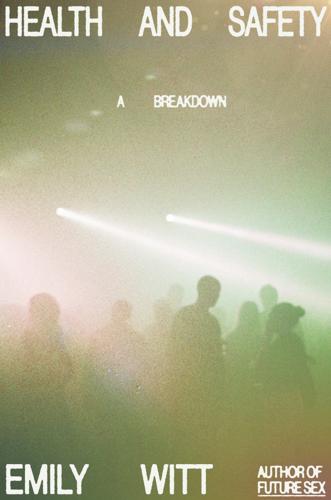
Health and Safety: A Breakdown
by
Emily Witt
Published 16 Sep 2024
It would likely have remained in the archives if it were not for entrepreneurial chemists looking to skirt United States drug laws. The bad batch that summer had been sold in the bodegas around Myrtle-Broadway as “herbal incense” under the brand “AK-47 24 Karat Gold.” Drugs in New York were class-specific consumer goods; AK-47 24 Karat Gold was not a drug the young professionals would be microdosing. The gentrifiers had their own delivery services for pot, mushrooms, pills, ketamine, and cocaine: the cars with tinted windows that would pull up outside bars; the punk stoners who delivered mushrooms and weed to our apartments by bicycle. The street users had anxious conferences in doorways or hunched over duffel bags.
…
I’m sure that if you asked any experienced raver what their preferred party formula was, even a sober raver, they would be able to tell you. Different personality types were drawn to different drugs. Some people just took Adderall to stay awake and smoked weed to add a layer of interest to their surroundings. There were cokeheads and ketamine queens and people who microdosed mushrooms. Others took a carefully weighed-out dose of MDMA or dipped into their little Ziploc bags of it all night. The sober crowd drank Club-Mate for the caffeine and smoked cigarettes. Most of us specialized in polyintoxication. We learned how each drug interacted with another drug, and when was the best time along the journey of one chemical to add another.

Perfection
by
Vincenzo Latronico
Published 18 Mar 2025
They were dressed either in suits with mismatching piercings and neck tattoos, or shiny sportswear. The Israeli woman elbowed her way up two flights of the marble staircase, explaining—in response to their puzzled faces—that the top floor belonged to a psychedelics evangelist who for years had been dealing microdoses for cryptocurrency and had got rich during the first Bitcoin price surge. The music grew louder with every step, but it sounded more like a kind of distant rumbling in that crowded, cavernous space. On the top floor landing the throng was even more tightly packed and the double door was being blocked by two bouncers and a house plant.
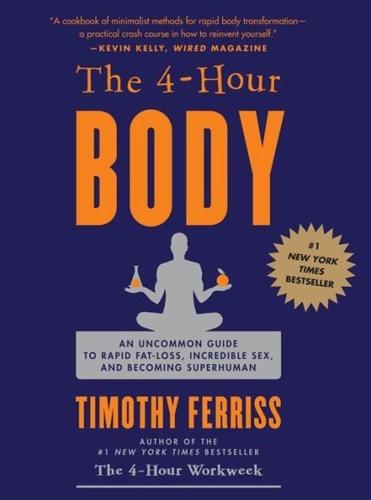
The 4-Hour Body: An Uncommon Guide to Rapid Fat-Loss, Incredible Sex, and Becoming Superhuman
by
Timothy Ferriss
Published 1 Dec 2010
MOVEMENT Feldenkrais Pilates Assisted stretching Tai Chi Chuan Yoga (Ashtanga, Bikram) *Barefoot/Vibram walking (lower back) *Egoscue (cervical/neck and mid-back) MANIPULATION Massage (from Swedish to Rolfing) Acupuncture and acupressure *Active-release technique (ART) (shoulders) *Advanced muscle integration therapy (AMIT) (pectorals, glutes, and calves) Graston technique MEDICATION Topical Androgel® (crystallized testosterone) DMSO (a solvent popular among sprinters and racehorses) combined with MSM Arnica Oral Cytomel® (liothyronine sodium = synthetic T3 thyroid hormone) High-dose L-glutamine (50–80 grams per day) High-dose bovine and chicken collagen (types 1, 2, and 3) Intra-articular (in the joint) injections PRP Cortisone *Prolotherapy (left knee, right wrist) Intramuscular injection *Deca-Durabolin® (nandrolone decanoate) (left shoulder) Delatestryl® (testosterone enanthate) Depo®-Testosterone (testosterone cypionate) Sustanon® 250 (testosterone blend) HCG (human chorionic gonadotropin) *Biopuncture protocol using microdoses of Traumeel and lympho- myosot (Achilles tendon, infraspinatus) Subcutaneous (under the skin) injection HGH (human growth hormone) *Biopuncture protocol (same as above) It’s quite the laundry list. The Chosen Few All of them helped to some extent, but only a few of them produced relief that lasted more than 48 hours, and some of the exercises were impossible to perform alone.
…
Traumeel has been shown in some peer-reviewed journals to shorten recovery time from acute sports injuries and inhibit the secretion of immune mediators (IL-1B and TNF-alpha) that are associated with tissue damage and increased inflammation. Though biopuncture solutions aren’t diluted to the extent that they contain no active product (like most homeopathic medicine), they are diluted and referred to as “microdoses.” Lee used both Traumeel and lymphomyosot in my treatments. In addition to the drug treatments, we also tested a saline solution with 20% dextrose. It was just like prolotherapy but with shallower injections. The results of dozens of “baby jabs” with a small 30-gauge half-inch needle were amazing.
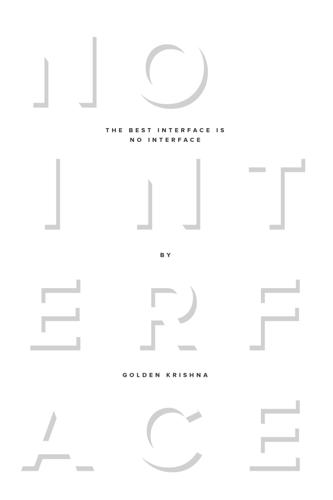
The Best Interface Is No Interface: The Simple Path to Brilliant Technology (Voices That Matter)
by
Golden Krishna
Published 10 Feb 2015
I hate seeing the product I’m about to buy through clear glass. That’s why companies like Coca-Cola and Pepsi are working on touch interfaces so that you can order your favorite drinks through a series of menus and error messages. As USA Today wrote of Coca-Cola’s efforts, “This teen-targeting, touch-screen dispenser flavors self-created beverages in micro-doses. It may be Coke’s best hope to keep Millennials fully engaged, socially involved and buying fizzy drinks at a time industry sales are falling faster than water down the drain.”7 Duh. Touchscreens are totally going to help sales. 4. UX ≠ UI: I make interfaces because that’s my job, bro Yeah, we went down the wrong path, but it’s not really our fault.
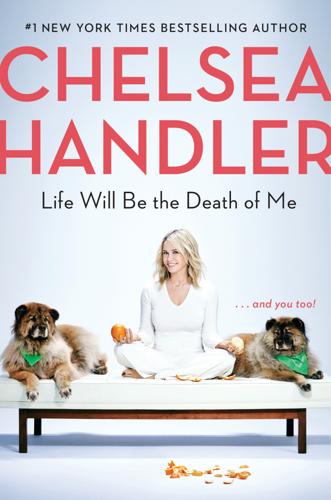
Life Will Be the Death of Me: ...And You Too!
by
Chelsea Handler
Published 8 Apr 2019
* * * • • • The legalization of marijuana in California raised standards at dispensaries. The educative component that was lacking for so many years was now available on all store-bought weed. The labeling of strains, along with the labeling of THC vs. CBD ratios, was all right there in black and white. With the advent of medicinal-grade, controlled micro-dosing, there aren’t a lot of people I wouldn’t recommend it to. I’ve turned straight-arrow people into people I can actually spend time with. I’ve gotten friends who have never done any drugs, friends who have had terrible experiences with edibles, my Mormon sister, people’s parents, Muslims, and one nun to imbibe.

12 Bytes: How We Got Here. Where We Might Go Next
by
Jeanette Winterson
Published 15 Mar 2021
But Uber is not volunteering to be the good guy – it costs too much – so legislation is the only way forward. That’s one example. The more I read, the more I realise that the tech companies are, at present, outmanoeuvring their social and fiscal responsibilities to the billions of people who are micro-dosing them with money 24/7. Accountability matters. In the Data Age, accountability is responsibility. That’s what Big Tech has to recognise. The usual definition of Big Tech is a reference to the top 5 tech companies: Amazon, Apple, Google, Facebook, Microsoft. In reality, Big Tech is about global reach, global control, and a business model that seeks global power without local responsibility.

Uncanny Valley: A Memoir
by
Anna Wiener
Published 14 Jan 2020
As if in slow motion, I felt the force of the swerve. The polls were closing. The air was beginning to cool. EPILOGUE For months after the election, my friends and coworkers were not doing well. Stomachaches, insomnia, astrology. They drank too much. They took up moderate vaping. They went to meditative sound baths and considered microdosing to stave off looming depression or regain lost productivity. They appended their email salutations with phrases like “given the circumstances” and “despite the news.” Everyone engaged in deep and irresponsible magical thinking. On the heavily moderated message board, the commentariat discussed a Marshall Plan of rationality, a new enlightenment.

Only Americans Burn in Hell
by
Jarett Kobek
Published 10 Apr 2019
They walked out of Tenant of Trees. HRH turned to the woman sitting at his left. She twenty-five years old. She was an aspiring actress. She was from Kissimmee, Florida. She had moved to Los Angeles to follow her dreams. Her body was filled with the following psychoactive agents: Paxil, Lexapro, and a microdose of LSD. “My dear,” said HRH to the aspiring actress, “I wonder if you have ever perused the speeches of Cesar Chavez?” Chapter Fifteen Until the Wheels Fall Off and Burn By the way, all of the women in Fairy Land, and the Fairy Knight too, had Afro-textured hair and skin loaded with eumelanin in the stratum basale of their epidermis.

Uprooting: From the Caribbean to the Countryside - Finding Home in an English Country Garden
by
Marchelle Farrell
Published 2 Aug 2023
With a new garden to tend, and dreaming of spring warmth in our freezing house, over winter I had bought packets and packets of seeds, delightedly poring over catalogues online. The joy of thumbnail images of potential summer beauty! They were lushly irresistible. And as lockdown leads to seeds rapidly selling out online, I am grateful for the prescient packets stuffed into the tin on the kitchen worktop, to which we are drawn again, and again. Microdoses of hope. To combat the online lack of seeds, a large plastic box of them begins going around the village, from one doorstep to the next. People put extras in, help themselves to ones they need. Someone mentions somewhere that the new arrivals to the village seem to quite like gardening, and the box appears by our door, with a note asking me to help myself.
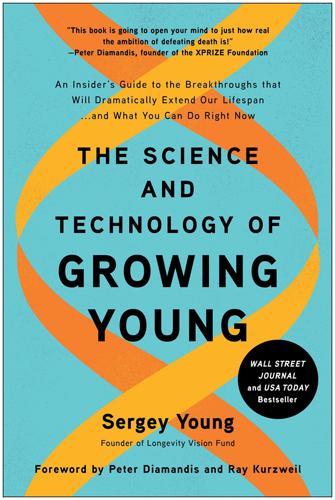
The Science and Technology of Growing Young: An Insider's Guide to the Breakthroughs That Will Dramatically Extend Our Lifespan . . . And What You Can Do Right Now
by
Sergey Young
Published 23 Aug 2021
Notably, Daniel is also the founder of several start-ups, including Intellimedicine, which is developing a machine to 3D-print personalized Intellimeds containing exactly the right molecules, in exactly the right doses, that correspond to your conditions, nutritional needs, and daily health status. Intellimed’s prototype 3D printer has sixteen silos, which can combine 1- to 2-milligram microdoses of multiple substances into a single pill. Kraft envisions the machine being used to combine medicines in a pharmacy, before eventually becoming as commonplace for home use as a toaster oven. “Not all drugs or common doses work for all individuals,” reads Intellimedicine’s mission statement. “Differences in weight, age, activity, and diet . . . dramatically impact drug dosing and selection.”8 In the Near Horizon of Longevity, the ability to take control of your own health with personalized medicine will be available on demand.

The Uninhabitable Earth: Life After Warming
by
David Wallace-Wells
Published 19 Feb 2019
But however manipulated by marketing consultants, and however dubious its claims to healthfulness, wellness also gives a clear name and shape to a growing perception even, or especially, among those wealthy enough to be insulated from the early assaults of climate change: that the contemporary world is toxic, and that to endure or thrive within it requires extraordinary measures of self-regulation and self-purification. What has been called the “new New Age” arises from a similar intuition—that meditation, ayahuasca trips, crystals and Burning Man and microdosed LSD are all pathways to a world beckoning as purer, cleaner, more sustaining, and perhaps above all else, more whole. This purity arena is likely to expand, perhaps dramatically, as the climate continues to careen toward visible degradation—and consumers respond by trying to extract themselves from the sludge of the world however they can.

A Year of Living Danishly: My Twelve Months Unearthing the Secrets of the World's Happiest Country
by
Helen Russell
Published 14 Sep 2015
Just enough to get you through a single day before you have to drag your delirious, fever-addled body back for more. There are, however, ways around this. During my last exchange at the local pharmacy, the woman behind the counter took pity on me and told me that she could only sell me ten without a prescription, unless it was ‘an emergency’. I was just about to accept the micro-dose and be on my way when she lowered her chin and looked up at me knowingly. ‘Is it an emergency?’ She tilted her head and nodded slightly, coaxing me to agree. ‘Er … yes?’ ‘So you’re telling me that this is an emergency?’ She asked again, nodding slowly. ‘Well, no,’ I started to panic under the pressure, ‘not really, it’s just man flu—’ The pharmacist shook her head furiously until I corrected myself: ‘I mean, yes, yes it is.

Hate Inc.: Why Today’s Media Makes Us Despise One Another
by
Matt Taibbi
Published 7 Oct 2019
People who watch MSNBC, meanwhile, are tuning in to receive mega-doses of the world’s thinnest compliment, i.e. that they’re morally superior to Donald Trump. The network lately has become a one-note morality play with endless segments about Michael Flynn, Michael Cohen, and Paul Manafort. This isn’t the first time they’ve used this model. The coverage formula on both channels is to scare the crap out of audiences, then offer them micro-doses of safety and solidarity, which come when they see people onscreen sharing their fears. There is a promise of reassurance that comes with both coverage formulas. This is critical, that you’re encouraged to have consumer expectations, even though news should be unpredictable. Even sports fans expect disappointment about half the time.
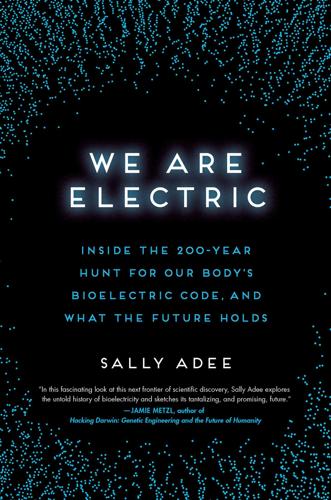
We Are Electric: Inside the 200-Year Hunt for Our Body's Bioelectric Code, and What the Future Holds
by
Sally Adee
Published 27 Feb 2023
When I caught my first glimpse of this strange new use for electricity in 2009, it was the stuff of obscure medical trials and secret military projects. Today, the notion of wearing an electrical stimulator on your head isn’t as foreign as it seemed back then; it’s certainly the kind of thing you can imagine someone in Silicon Valley doing for a little extra mental edge, alongside intermittent fasting or microdosing psilocybin. But it’s not just about boosting your brainpower with a volt jolt—there are many other ways electricity is being used to treat the ailments of body and mind. Take deep brain stimulation, a treatment of last resort for Parkinson’s disease, in which two electrodes the size and shape of uncooked spaghetti are slid into the deepest parts of your brain to quiet the disease’s destructive symptoms.
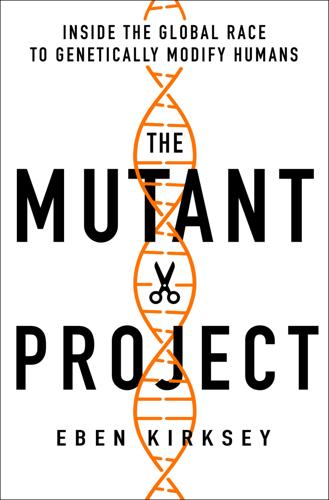
The Mutant Project: Inside the Global Race to Genetically Modify Humans
by
Eben Kirksey
Published 10 Nov 2020
Aaron’s girlfriend was twenty-three and working for the Trump administration in a low-level data analytics job at the State Department. She asked to stay anonymous, saying that she had come along to provide moral support. There was a lot of hugging and hand-holding during the interview. As I gained their trust, Aaron intimated that he was conducting experiments in his own body, using human growth hormone and microdoses of psychedelic drugs like mescaline and Ecstasy. When I asked about the warning from the FDA, Aaron told me about his plans to evade the government with a cryptocurrency infrastructure. “I just don’t think that it is very viable for them to stop the supply chain” for the DIY gene therapy, he said.
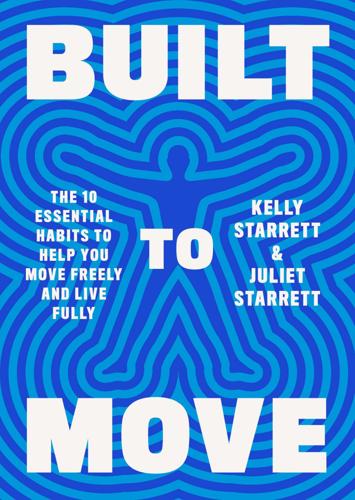
Built to Move: The Ten Essential Habits to Help You Move Freely and Live Fully
by
Kelly Starrett
and
Juliet Starrett
Published 3 Apr 2023
The Seated Hamstring Mobilization feels like a self-massage, but what it’s actually doing is loosening up the tissues in the backs of the legs so they move more fluidly. Other mobilizations help the brain learn to control movement. Collectively, they’ll help you score that 10 on the Sit-and-Rise Test. Think of these mobilizations as little microdoses of movement. They’re simple; you don’t need a super sophisticated intervention to increase mobility. You just need to start reintroducing your body to these very natural movements. There are four mobilizations in all. The ideal is to do two of them every couple of days (even if you passed the Sit-and-Rise Test).
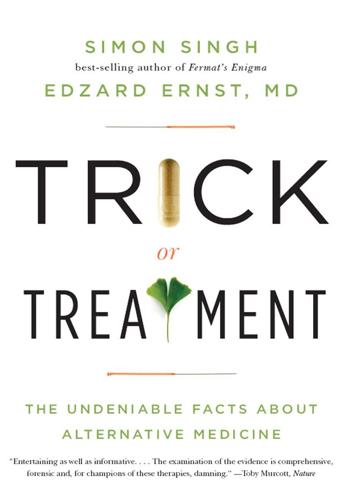
Trick or Treatment: The Undeniable Facts About Alternative Medicine
by
Edzard Ernst
and
Simon Singh
Published 17 Aug 2008
Overall her mood has improved, however, I have given her a dose of Carcinosin Nosode 30C over the day followed by Berlin Wall 30C one a day in the morning…’ A response in the Medical Monitor emphasized the ridiculous nature of Berlin Wall as a homeopathic remedy: ‘What therapeutic advantages does Berlin Wall have over ordinary garden wall or Spaghetti Junction concrete? And do Scottish homeopaths use microdoses of that historic nostrum, Hadrian’s Wall? I think we should be told.’ So how did we get into a position whereby each year we are spending £40 billion globally on alternative therapies, most of which are as senseless as homeopathy, and many of which are a good deal more dangerous? In the penultimate section of this book we will look at the ten groups of people who are most responsible for our increasing enthusiasm for alternative medicine.

Palo Alto: A History of California, Capitalism, and the World
by
Malcolm Harris
Published 14 Feb 2023
Harman got a placement at SRI, too, and he quietly resumed the acid experiments under the auspices of the Alternative Futures Project.17 Fadiman has continued the work into the present, and his 2011 book, The Psychedelic Explorer’s Guide: Safe, Therapeutic, and Sacred Journeys, inspired a surge of interest in “microdosing,” now a popular performance-enhancing method in Silicon Valley tech circles that involves taking tiny amounts of LSD before work, a practice first proposed by Fadiman that’s sometimes imagined as a twenty-first-century off-label use of the drug.18 But acid was marketed to Bay Area knowledge workers as a productivity aid from the beginning.
…
Jay Stevens, Storming Heaven: LSD and the American Dream, Perennial Library (New York: Harper & Row, 1995), 178. 16. Willis W. Harman et al., “Psychedelic Agents in Creative Problem-Solving: A Pilot Study,” Psychological Reports 19, no. 1 (August 1966): 211–27. 17. Todd Brendan Fahey, “The Original Captain Trips,” High Times, November 1991. 18. Vince Polito and Richard J. Stevenson, “A Systematic Study of Microdosing Psychedelics,” PLOS ONE 14, no. 2 (February 6, 2019): 2. 19. Jay Stevens, Storming Heaven: LSD and the American Dream (New York: Grove Press, 1987), 17. 20. Ibid., 225–26. 21. Mona Lisa Saloy, “When I Die, I Won’t Stay Dead: The Poetry of Bob Kaufman” (PhD diss., Louisiana State University, 2005), 215, https://digitalcommons.lsu.edu/gradschool_dissertations/3400. 22.

The Future Is Faster Than You Think: How Converging Technologies Are Transforming Business, Industries, and Our Lives
by
Peter H. Diamandis
and
Steven Kotler
Published 28 Jan 2020
The inventor agreed to build the soft drink behemoth a better soda fountain, and in return, Coke agreed to use their global distribution network to get the Slingshot into water-starved countries. Both kept their word. Kamen helped design the “Freestyle Fountain Beverage Dispenser,” which uses “micro-dose technology” to mix over 150 different beverages on demand (talk about choice paralysis). Coca-Cola, meanwhile, teamed up with ten other international organizations and began distributing the Slingshot in 2013, a core feature of their “Ekocenter” kiosks. Part general store and part community center, Ekocenters are solar-powered shipping containers that provide remote, low-income communities with safe drinking water, internet access, nonperishables (like mosquito repellant), first-aid supplies, and, of course, Coca-Cola products for sale.
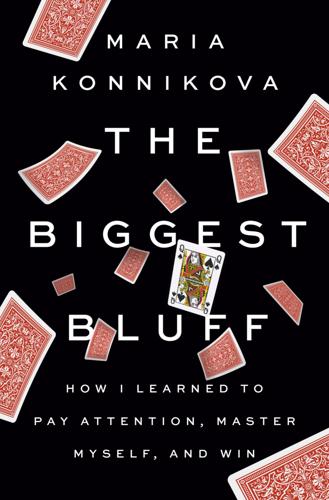
The Biggest Bluff: How I Learned to Pay Attention, Master Myself, and Win
by
Maria Konnikova
Published 22 Jun 2020
Need a boost of energy? Caffeine pills of all doses are on offer. An even bigger boost? Nicotine tablets to the rescue. Trouble focusing during your deep run? Adderall, Ritalin, you name it, it’s there. That’s not to mention marijuana in all its forms and copious amounts of psychedelics. (“I swear by microdosing,” one player who shall remain nameless tells me. “I won my last WCOOP title that way.” WCOOP, I’ve learned, is the World Championship of Online Poker. WCOOP titles are hard to come by, with or without a little psilocybin thrown in.) It’s not that high-level poker players are particularly drug-loving in the sense of chasing a high.

Whole Earth: The Many Lives of Stewart Brand
by
John Markoff
Published 22 Mar 2022
Forced back to America a year later by the threat of the draft, Fadiman moved to California and began graduate work at Stanford. Ultimately he would become the bridge between East Coast and West Coast groups who were independently experimenting with psychedelic drugs. He would also go on to carry the torch for LSD for many years, becoming the public face of the microdosing scene that swept through Silicon Valley beginning in 2011. Fadiman arrived at Stanford as a distinctly unhappy graduate student in 1961. In school only to avoid the military, he was feeling that it was a waste of his life; he would rather have been in Europe. Having recently been introduced to psychedelic drugs, he now saw the world as a much different place.
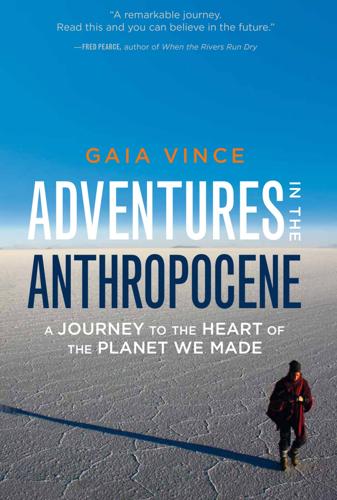
Adventures in the Anthropocene: A Journey to the Heart of the Planet We Made
by
Gaia Vince
Published 19 Oct 2014
The excess lingers in soils, lakes and oceans, fertilising massive blooms of algae that can be toxic and use up the dissolved oxygen, suffocating other species. This causes dead zones for kilometres, and is a particular issue in China, where intensive farming has polluted whole river systems. A solution is targeted application – or ‘micro-dosing’ – directly to each plant, which minimises waste, and catchment reed beds can filter out any run-off before it enters waterways. Organic farming advocates prefer pre-industrial methods of soil enrichment, such as muck-spreading, crop rotation with legumes (which harbour bacteria in their roots that can ‘fix’ nitrogen directly from the air, enhancing the soil’s fertility for other crops while requiring little or no fertiliser), and so-called ‘conservation agriculture’, in which the stalks and leaves that are not harvested are left in the fields to mulch down.

Kingdom of Olives and Ash: Writers Confront the Occupation
by
Michael Chabon
Published 29 May 2017
He has been awarded the Leopoldo Alas Prize (1959), the Rómulo Gallegos Prize (1967), the National Critics’ Prize (1967), the Critics’ Annual Prize for Theatre (1981), the Prince of Asturias Prize (1986), the Miguel de Cervantes Prize (1994)—the Spanish-speaking world’s most distinguished literary honor,—the Jerusalem Prize (1995), the Peace Prize of the German Book Trade (1996), the PEN/Nabokov Award (2002), and the Nobel Prize (2010). AYELET WALDMAN is the author of the book A Really Good Day: How Microdosing Made a Mega Difference in My Mood, My Marriage and My Life, and of the novels Love and Treasure, Red Hook Road, Love and Other Impossible Pursuits, and Daughter’s Keeper, as well as the essay collection Bad Mother: A Chronicle of Maternal Crimes, Minor Calamities, and Occasional Moments of Grace.

Coders: The Making of a New Tribe and the Remaking of the World
by
Clive Thompson
Published 26 Mar 2019
“efficiency and effectiveness”: Arianna Simpson, “Here’s What It’s Like to Be a Woman at a Bitcoin Meetup,” Business Insider, February 3, 2014, accessed August 19, 2018, https://www.businessinsider.com/arianna-simpson-on-women-and-bitcoin-2014-2. to focus while coding: Rhett Jones, “Lawsuit: VR Company Had a ‘Kink Room,’ Pressured Female Employees to ‘Microdose,’ ” Gizmodo, May 15, 2017, accessed August 19, 2018, https://gizmodo.com/lawsuit-vr-company-had-a-kink-room-pressured-female-e-1795243868. The lawsuit was later settled out of court: Marisa Kendall, “Silicon Valley Virtual Reality Startup Settles ‘Kink Room’ Lawsuit,” The Mercury News, September 7, 2017, accessed October 7, 2018, https://gizmodo.com/lawsuit-vr-company-had-a-kink-room-pressured-female-e-1795243868.
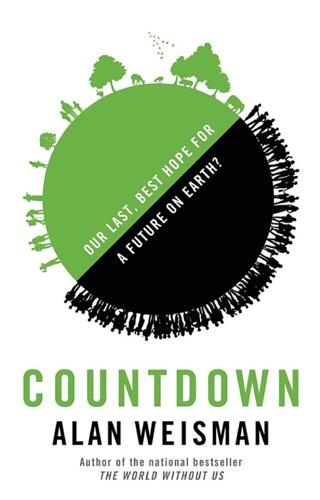
Countdown: Our Last, Best Hope for a Future on Earth?
by
Alan Weisman
Published 23 Sep 2013
There are also cowpeas, oranges, pomelos, tangelos, and stands of Jatropha curcas, a Central American shrub whose oily seeds can be pressed for biodiesel. Lining the paths are Indian neem trees—a source of natural antiseptics and bug repellant. Under development are desert-adapted grapes and figs. ICRISAT has created this nutritious oasis with minimal insecticide and with only microdoses of fertilizers, injecting directly to the roots of each plant just one-fifth of a typical field’s normal application of nitrogen, phosphorus, and potassium. It also has fifteen scientists, one hundred field technicians and support staff, and three hundred laborers. And something else, rare in Niger’s poor croplands: deep wells.

The Power Law: Venture Capital and the Making of the New Future
by
Sebastian Mallaby
Published 1 Feb 2022
Their egalitarianism ensured that they were open to any unkempt upstart who might see something, sense something—something with the potential to change everything. You can still see traces of this counterculture in the Valley: in the sandals, even if next-gen nylon has displaced frayed leather; in the left-liberal, sometimes libertarian politics; in the conviction that your productivity can be augmented by micro-dosing LSD. But the trouble with the cultural explanation for West Coast exceptionalism is that the rest of the world has never been as buttoned up as the Valley’s boosters imagine. The hacker ethic, championed by communalist nerds who obsessed over code and declined on principle to monetize it, actually originated at MIT—with the Tech Model Railroad Club, a group of MIT undergrads enthralled by the technology behind model trains before their attention was diverted to the TX-0 computer.[6] (The TX-0 was so captivating that the authorities at MIT considered getting rid of it.

On the Edge: The Art of Risking Everything
by
Nate Silver
Published 12 Aug 2024
GO TO NOTE REFERENCE IN TEXT cost cryptocurrency holders: Larry Neumeister, “FTX Founder Sam Bankman-Fried Convicted of Stealing Billions from Customers and Investors,” USA Today, November 2, 2023, usatoday.com/story/money/2023/11/02/sam-bankman-fried-convicted-fraud/71429793007/. GO TO NOTE REFERENCE IN TEXT psychedelic drug use: Kirsten Grind and Katherine Bindley, “Magic Mushrooms. LSD. Ketamine. The Drugs That Power Silicon Valley,” The Wall Street Journal, June 27, 2023, sec. Tech, wsj.com/articles/silicon-valley-microdosing-ketamine-lsd-magic-mushrooms-d381e214. GO TO NOTE REFERENCE IN TEXT the polymathic Collison: Tyler Cowen and Patrick Collison, “Patrick Collison Has a Few Questions for Tyler (Ep. 21—Live at Stripe),” Conversations with Tyler, 2017, conversationswithtyler.com/episodes/patrick-collison.